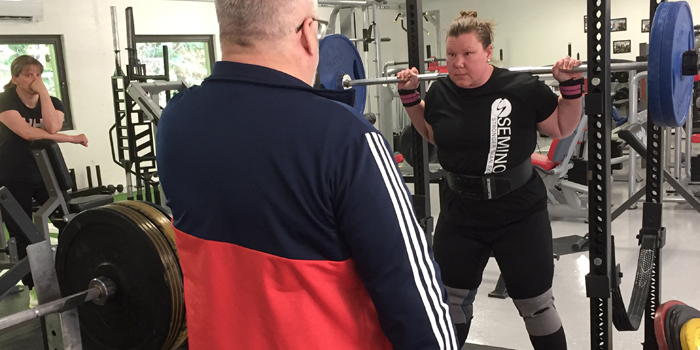
Squatters, you need to read this!
I understand if you think you’ve found the right squat stance, and maybe you’re right about that. But actually, right now, I don’t care. Because the reason why I suggest that you change your squat stance is not to make your squat easier. It is so that you find your weakest links in a nearby squat position, and while you’re doing that, you can prepare for your heaviest squats.
Sure, you can switch bars and the height of the box you’re squatting from. You can switch chains and resistance bands and alternate your squats for eternity just by doing that. This conjugate approach will surely help you to gain strength in your squat position. But it will not help you to open your taint better; it will not make the nearby tissue significantly softer or stronger. Why you should strive to be softer is because it will help you to perform the exercises better and to recover faster.
“The Chinese used to say, as long as there is circulation, there will be life. With stagnation, death will come.”
When your tissue becomes softer, it will increase the circulation and encourage your recovery. At the same time, it will ease your proper squat depth. I don’t need to tell you the benefit of getting stronger in the nearby tissue, but I do it anyway. The main reason for getting stronger in the nearby tissue is because it could assist the main muscle tissue in performing your regular squat. Reason number two, it could save you if you lose the technique while doing a regular squat. If you fail in the technique during the lift, you will have the strength to fail safer and prevent an injury. If you are a competitor lifter, a sprained ankle could destroy your career at least for one year. Squatting in different positions makes you stronger in more positions. Simple as that.
I am not suggesting that you give your max effort in a squat position that is too far away from your regular safe squat position. But it could be a good idea during the warm-up to squat in different positions. Assume that you’re a wide squatter, which most of the powerlifters are. You could start from a closer squat stance and go wider and wider until you are wider than your regular position, then step in again to your ordinary squat stance. Also, remember to switch foot positions (angles of the foot). If you are a squatter with a close stance, you could go from a close stance to a medium-wide stance and step into your normal stance again. But if you’re a close-stance lifter, you need to pay more attention to switching foot positions (where your toes point) than if you’re a wide-stance lifter. Wide-stance lifters have more spread on their feet than lifters with close stances do. And if you are a close-stance lifter (if you really are and don’t just think you should squat close), you probably have a pelvis and femur position that doesn’t allow you to go too wide, and you can become sore if you force it too much. My article “Perfect Squat in Five Minutes” will give you a deeper understanding of this.
Paused Squat
You should also pay attention to setting the right abdominal pressure in your different squat positions. One way to get more focus on it is to do paused squats and to pause at different heights. Most people pause at the bottom of the lift. But there is not much going on down in the basement. You can sure get looser and get more flexibility in your movement at the bottom, but you don’t get much stronger compared with if you go down and move up again until you cross the parallel and stop with your knees slightly bent. There is much more going on in that position, and that’s the reason why most people who fail in a squat fail in that position. When you can’t keep your core strength, you automatically start to raise your butt and force your lower back to execute the movement. Otherwise, you fall over with the bar over your head unless you don’t drop it behind your back and jump forward. The pause itself puts your core under static pressure. Sure, your ass and your legs also have to keep the resistance, but they are secondary to the core. If you want to read more about abdominal pressure, you should take a look at my article: “Abdominal Pressure – What You’re Missing in Every Lift”
Before I wrote this article, I asked my followers on Instagram (@seminoff) what they wanted to know about squats. The main questions I got, which I tried to answer in this article, are:
- What should I do to get better depth in my squat?
- Which squat stance builds the most strength development?
- What are the benefits and disadvantages of different squat variations?











1 Comment